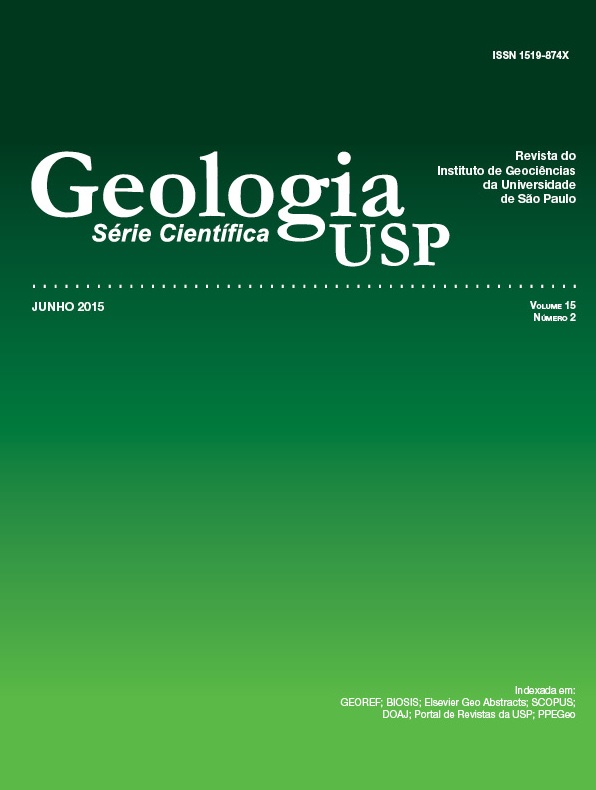Physiographic compartmentation and multithematic analysis applied to development geoenvironmental map: a case study in Espírito Santo do Pinhal and Santo Antonio do Jardim, São Paulo State, Brazil
DOI:
https://doi.org/10.11606/issn.2316-9095.v15i2p3-24Keywords:
Integrated analysis, Multi thematic analysis, Geoenvironmental map, Geological process, GIS.Abstract
This article aims to present the developed studies for preparation of geoenvironmental mapping through physiographic subdivision and multithematic analysis, involving the correlation of physiographic units, of the use and occupation of land, the presence of permanent preservation areas and the map of intense average rainfall. The study area comprises the municipalities of Espírito Santo do Pinhal and Santo Antônio do Jardim, São Paulo State, located at the boundary between the Sedimentary Basin of Paraná and the crystalline basement in geological terms, and between the Atlantic Plateau, represented by the Mantiqueira Mountain, and Peripheral Depression, in the Mogi Guaçu river zone. This is an area known for organizing complex landscape, where there are problems related to dynamic surface processes, such as floods, erosion and mass movements. The studies were based on the definition of the physiographic units by the Zane’s methodological proposal (2011). For the definition of the Map of Geoenvironmental Units, the multithematic analysis was used to correlate physiographic units, use and occupation of land, the permanent preservation areas and intense average rainfall. To correlate the weights of the thematic maps the Analytic Hierarchy Process (AHP) was used. It can be concluded from the results obtained that the methodological sequence used in this research can be developed with public cartographic products and images, being ideal for small and medium municipalities due to their low cost and relatively easiness of application.Downloads
Download data is not yet available.
Downloads
Published
2015-06-30
Issue
Section
Articles
License
Authors who publish in this journal shall comply with the following terms:
- Authors keep their copyright and grant to Geologia USP: Série Científica the right of first publication, with the paper under the Creative Commons BY-NC-SA license (summary of the license: https://creativecommons.org/licenses/by-nc-sa/4.0 | full text of the license: https://creativecommons.org/licenses/by-nc-sa/4.0/legalcode) that allows the non-commercial sharing of the paper and granting the proper copyrights of the first publication in this journal.
- Authors are authorized to take additional contracts separately, for non-exclusive distribution of the version of the paper published in this journal (publish in institutional repository or as a book chapter), granting the proper copyrights of first publication in this journal.
- Authors are allowed and encouraged to publish and distribute their paper online (in institutional repositories or their personal page) at any point before or during the editorial process, since this can generate productive changes as well as increase the impact and citation of the published paper (See The effect of Open Access and downloads on citation impact).
How to Cite
Chaves, C. J., Reis, F. A. G. V., Giordano, L. do C., Amaral, A. M. C. do, & Corrêa, C. V. dos S. (2015). Physiographic compartmentation and multithematic analysis applied to development geoenvironmental map: a case study in Espírito Santo do Pinhal and Santo Antonio do Jardim, São Paulo State, Brazil. Geologia USP. Série Científica, 15(2), 3-24. https://doi.org/10.11606/issn.2316-9095.v15i2p3-24





